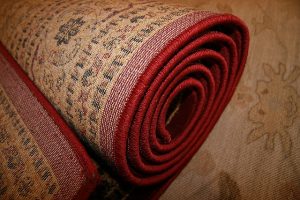How to relocate a nursery with ease
Any parent can testify that moving with a child is very difficult. Fortunately, the transfer of children’s nursery is not necessarily. In fact, with proper planning and supplies, moving a child’s room should be a walk in the park. From thorough cleaning and preparation of nursery items to developing a strategy and planning the packing process, here are ten tips to quickly and efficiently relocate a nursery.
10 steps to relocate a nursery
1. Discuss the move with your child
When moving to a new home, it is essential to discuss this with the child before collecting things in the house. If your child is a toddler, he will have an idea of what is happening. Children often feel anxious and sad about moving to a new home.

2. Find out which items to pack first
When you start packing to relocate a nursery, first collect all the non-essentials. These may include additional diapers, clothes that cannot be worn before or during movement, toys, books, picture frames, and mirrors. Wait for the move to pack the necessary items, such as the necessary clothing, bibs, bottles, and everything else that your child will need in the days preceding the move. Be sure to pack these essential items in a separate bag to take with you in the car or on the plane.
3. Declutter nursery before packing
Of course, it always helps to clean the room before moving it to a new home. Most likely, you still have clothes that no longer fit your child, objects that they no longer need, and toys that no longer interest your child. Clearing unnecessary children’s items will not only make your move cheaper (in the end, the fewer things you move, the cheaper this move will be), but it also simplifies packaging and coordination.
4. Wrap boxes with paper or plastic wrap
Unfortunately, babies and toddlers are especially prone to infection. For this reason, it is vital that all children’s things are kept clean and tidy while driving. Dust and dirt accumulated during the move will only aggravate allergies and microbes. To prevent a child from getting sick, we recommend wrapping all boxes and containers inside with clean paper or plastic wrap. Once the items are inside the box, cover them with an extra layer of paper to protect them.
5. Pack bedding and pillows with plastic wrap
Bedsheets, pillows, and crib mattresses must be packed in waterproof plastic packaging before being packed in a box. Lingerie is especially sensitive to dirt, grime, and mold. To keep the baby’s bedding intact, you should handle them with care when moving from Florida. Be sure to label all boxes with bedding carefully. Most likely, you will need your child’s bedding on the first night in the new house. Marking these boxes as clear as possible will save you from having to search through the piles of boxes on the day you move.
6. Use telescope boxes to pack pictures and mirrors
You should pack large prints and mirrors in telescope boxes so that they do not break during transport. Telescope boxes are usually tall, skinny boxes with separate tops and bottoms. The two parts fit together perfectly to completely cover your item. Telescope boxes are typically designed for packing fragile items such as TVs, paintings and mirrors.

7. Pack children’s books in small boxes
Although it is tempting to throw all your child’s books in one big box, we do not recommend doing so. Books (even children’s books!) can be very heavy. If you pack them in one big box, you risk breaking the box. Believe us – it won’t be fun if a bunch of books falls through the bottom and to the ground (or, even worse, on your foot!). For efficient packing of your child’s books, we recommend using small cardboard boxes. That will prevent the over-packing of the boxes and ensure that your books are safe and sound on their way to your new home.
8. Disassemble the crib and protect the bed mattress with the cover
Before moving with one of the interstate moving companies Florida, make sure that you and your partner disassemble the crib. That will facilitate the move and reduce the likelihood of damage to the bed during transport. To disassemble the crib, first remove the mattress, blankets, pillows, sheets, bumper, toys, and any other items inside the crib. While your partner is keeping the bed in place, remove the bolts from all sides of the bed. After disassembly, pack the crib legs separately from the sides of the crib. Wrap the mattress in a cot with stretch film and place all the bedding in a separate box.
9. Put all screws and bolts in a separate tagged bag
Considering their size, bolts and screws are too easily lost in the process of moving. When disassembling a crib, changing table, chair, or any other object of the nursery, be sure to save all the necessary equipment. We recommend placing nuts, bolts, and screws inside plastic bags. Label each bag with a piece of furniture it belongs to. That will greatly simplify the re-assembly process in the new house.
10. Roll up the rugs and secure them with an elastic film
Vacuum and clean the mat of the child’s room before moving. Once you completely clean the carpet, start rolling the rug from the shorter end. If you have an original cardboard tube that came with the mat, we recommend using it when folding. When the mat is folded, fasten it with strings and wrap in plastic wrap.

Ready to move?
Need to relocate a nursery? Try to hire a professional moving company. Our movers make it easy to transport all your belongings safely. Our company is licensed and insured, so you can be sure that your move will be in safe hands.

